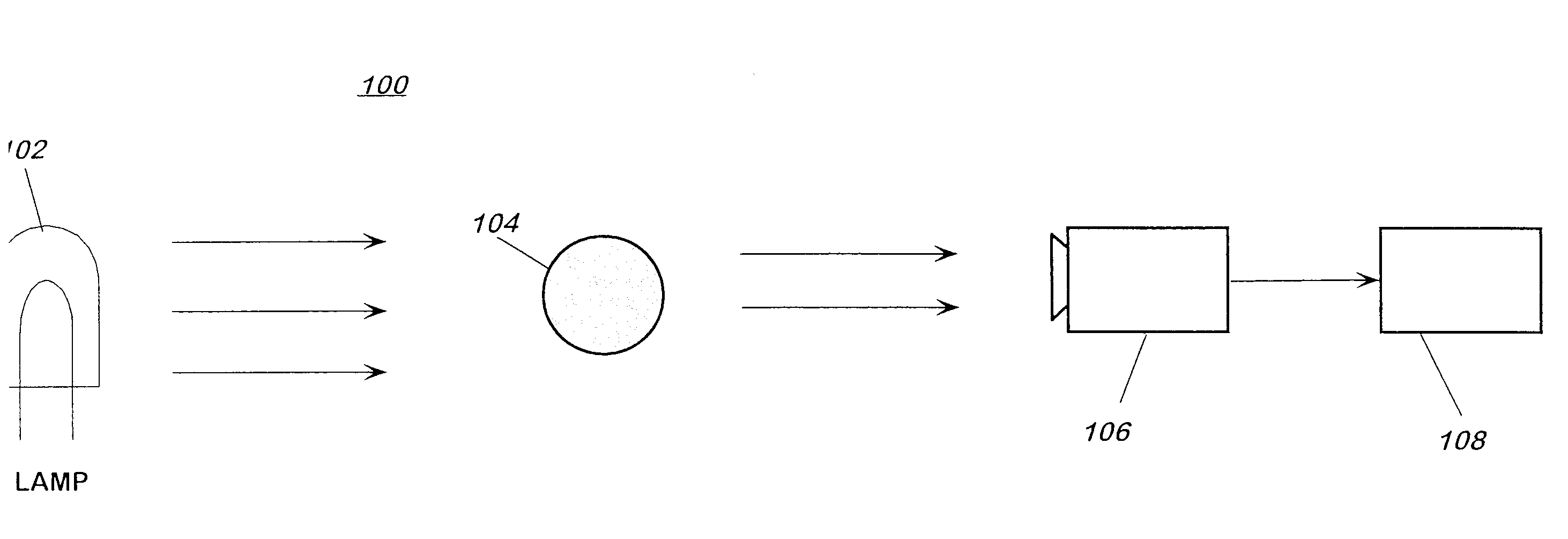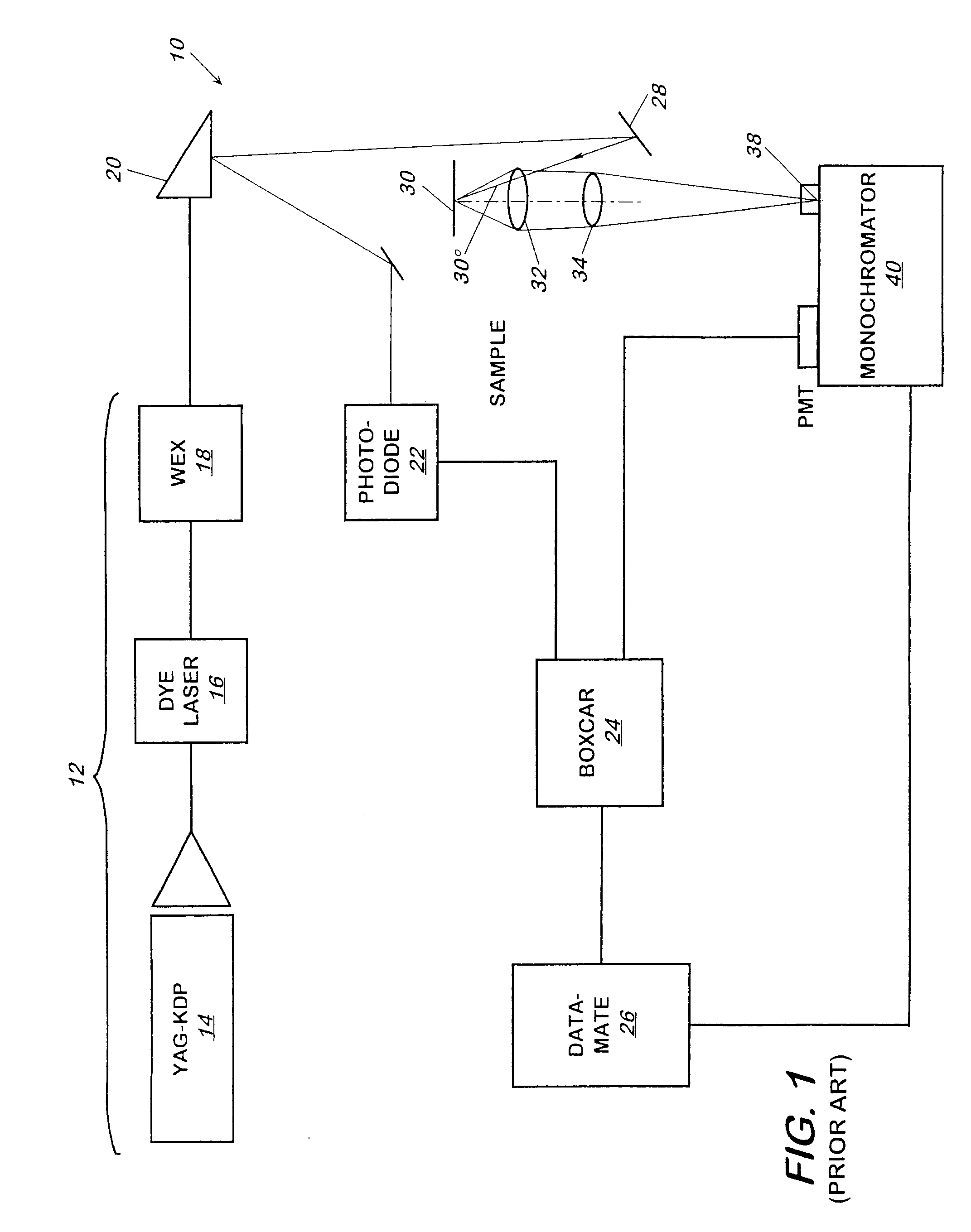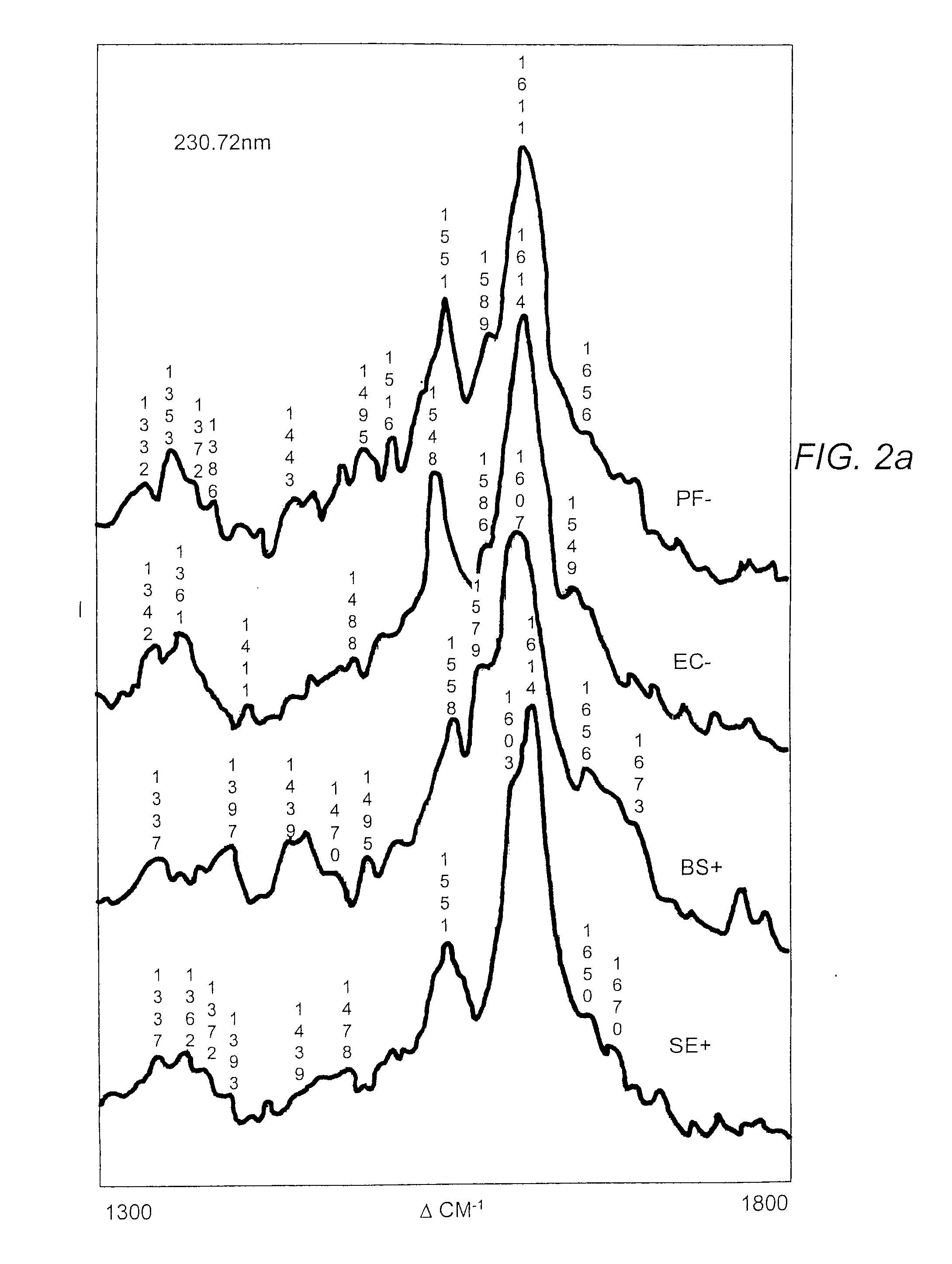Method and apparatus for identifying a substance
a substance and method technology, applied in the field of methods and apparatus for identifying substances, can solve the problems of difficult to identify the substance of interest, difficult to interpret the emitted spectra, and inability to identify more specific substances, etc., to achieve rapid identification and counting of organisms, increase specificity, and greater resistance to interference from background clutter
- Summary
- Abstract
- Description
- Claims
- Application Information
AI Technical Summary
Benefits of technology
Problems solved by technology
Method used
Image
Examples
Embodiment Construction
[0028]Referring now to FIG. 3, a spectroscopic detector 100 includes an illumination source 102 for illuminating a sample 104 and thereby inducing the emission of radiation characteristic of the sample, a spectrum acquisition sensor or sensors 106 for sensing and capturing as spectral measurement data the response spectrum in the emitted radiation, and a processor 108 for processing and analyzing the spectral measurement data.
[0029]Source 102 includes a number of options, as follows:
Laser Illuminator (Type 1):
[0030]A single Gain Module, pumped by a pair of 40-W diode bars. Combined with the second-harmonic unit, this can generate about 10 W of average power at a 5-kHz rate. The Ti:sapphire laser pumped by this, tuned to 800 nm, produces an average power of 4 W.
[0031]The 700-960 nm UV light from the Ti:sapphire laser is tripled or quadrupled to the DUV 233-320 nm using BBO (Beta Barium Borate) crystals. This nonlinear material, beta-barium borate (BaB2O4), has a large birefringence a...
PUM
 Login to View More
Login to View More Abstract
Description
Claims
Application Information
 Login to View More
Login to View More - R&D
- Intellectual Property
- Life Sciences
- Materials
- Tech Scout
- Unparalleled Data Quality
- Higher Quality Content
- 60% Fewer Hallucinations
Browse by: Latest US Patents, China's latest patents, Technical Efficacy Thesaurus, Application Domain, Technology Topic, Popular Technical Reports.
© 2025 PatSnap. All rights reserved.Legal|Privacy policy|Modern Slavery Act Transparency Statement|Sitemap|About US| Contact US: help@patsnap.com



